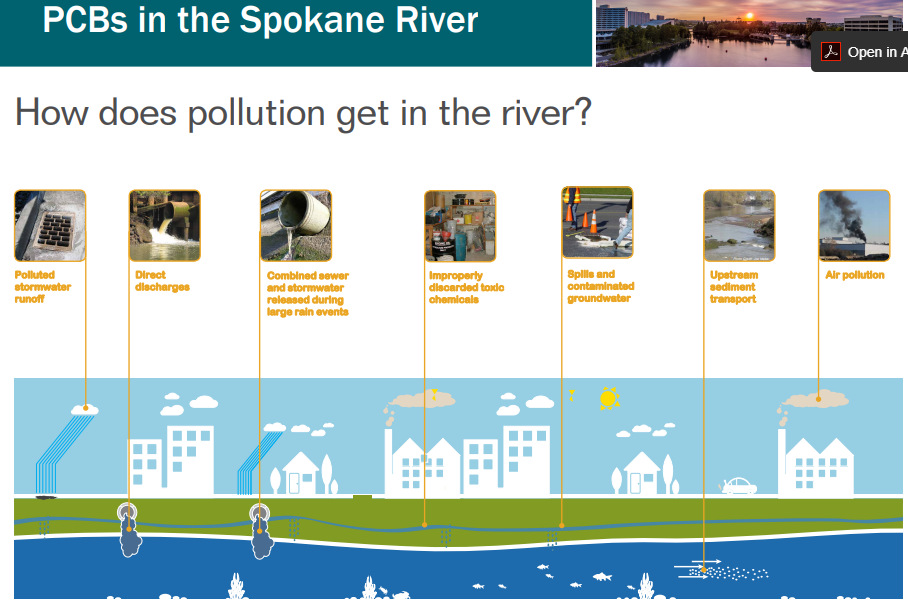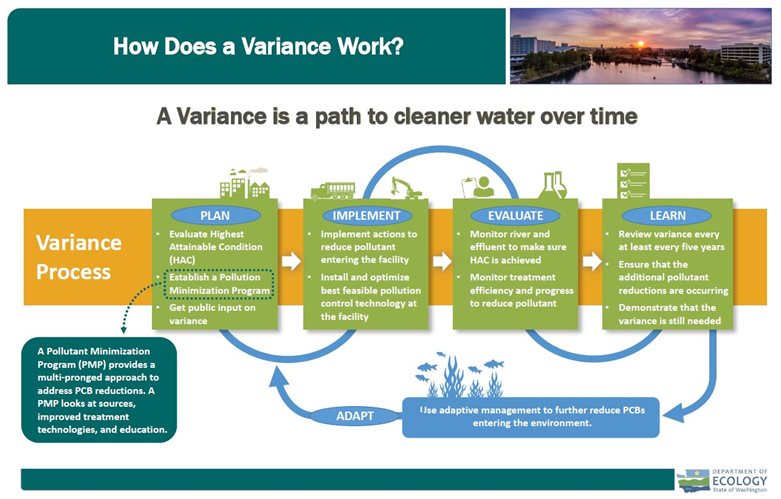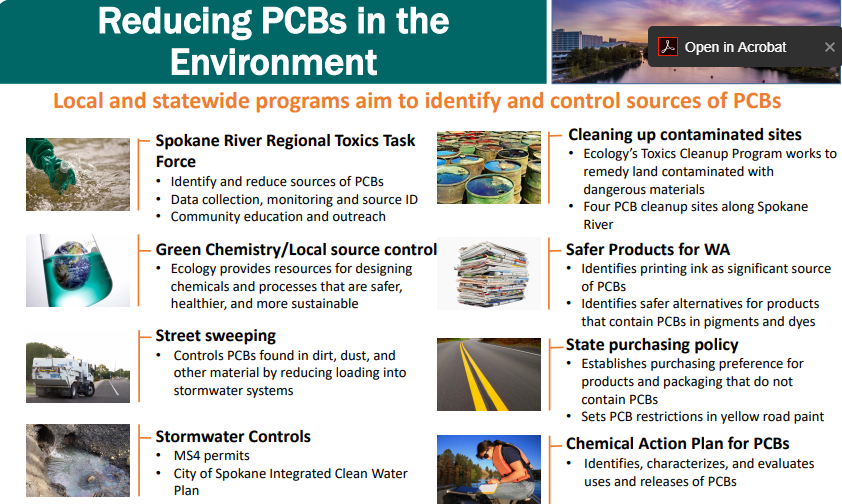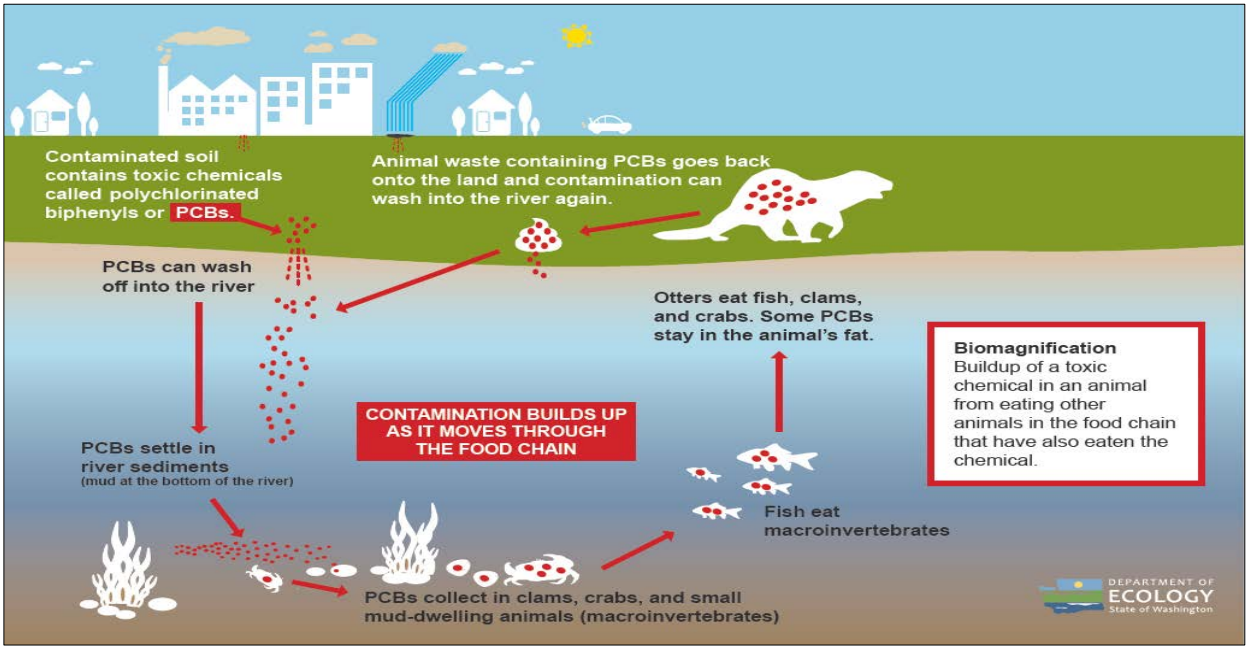Variance information
We have created informational posters to go along with our open house webinars on PCB variances for the Spokane River. You can view these posters ahead of our open house webinars, and send us questions you may have about them. Each poster has additional information in the sections below to help you navigate the content.
We intended to present these posters at an in-person open house, however, due to coronavirus we have changed to an online format. If you need these posters in another format for accessibility reasons please contact Marla Koberstein, the rulemaking lead.
Click the image to view the full poster.
Poster 1: How PCBs get into the Spokane River
This poster outlines the different ways PCBs can get into the river. From polluted stormwater runnoff, direct discharges from industries to improperly discarded chemicals, contaminated sediment and groundwater, and even air pollution, PCBs have multiple pathways into the river.
Click the image to view the full poster.
Poster 2: Water quality variance process
This poster walks you through some of the key steps of adopting and implementing a variance.
Click the image to view the full poster.
Poster 3: Ways to reduce PCB discharges to the Spokane River
We have several tools to reduce PCBs in the river and help our regulated community meet the water quality standards. Some of these options aren't mutually exclusive. This poster explores the outcomes of adopting a TMDL, adopting variances for individual dischargers, and issuing permits to the five dischargers without adopting any variances.
Click the image to view the full poster.
Poster 4: Reducing PCBs in the environment
This poster outlines statewide and regional actions that aim to reduce or prevent PCBs from getting into the environment.
This is only a part of the poster, click the image to view the full poster.
Poster 5: PCB measurements and risk
There are several sources of PCBs (products, waste, runoff, discharge) that ultimately end up in rivers and streams. PCBs have a tendency to attach to organic materials so they are often found in sediments or animal tissues at higher levels than in the water. This is because PCBs have limited ability to dissolve in water due t0 their chemical structure. PCBs are taken up by small animals and plants on the river bottom and through exposure in water. These small animals serve as food for larger animals such as fish. Animals eat other animals and PCBs build up in tissues. As larger animals eat smaller animals, PCBs amounts get higher in the bigger animals.
This is only one piece of this poster, please see the expanded section below for more indepth information for how PCBs are measured.
Contact information
Marla Koberstein
Rulemaking Lead
swqs@ecy.wa.gov






